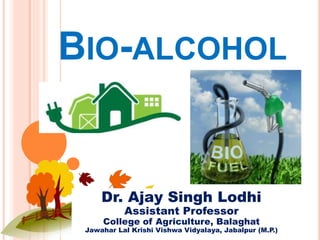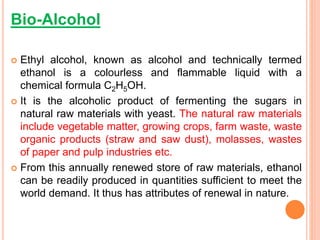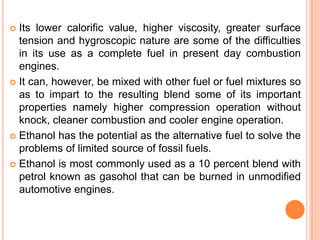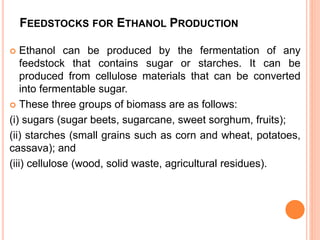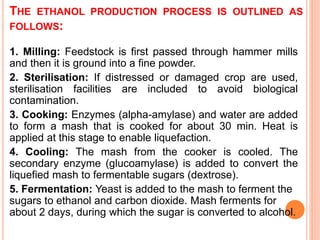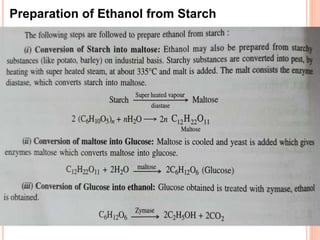The document discusses the production of bio-alcohol (ethanol) from various raw materials through fermentation. It describes the ethanol production process which involves milling the raw material, sterilization, cooking, cooling, fermentation using yeast, distillation to separate ethanol from other compounds, dehydration to remove water, denaturing to make ethanol unfit for human consumption, and blending with gasoline. Common feedstocks for ethanol production include sugars, starches, and cellulose-containing materials. The byproducts of ethanol production like distiller's grains and carbon dioxide also have market value. Ethanol offers advantages as an automobile fuel but is not suitable for diesel engines due to differences in combustion.
